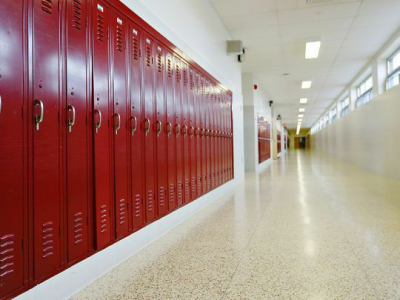Widgetized Section
Go to Admin » Appearance » Widgets » and move Gabfire Widget: Social into that MastheadOverlay zone
The Columbine Generation
The views expressed are those of the author and do not necessarily reflect the views of ASPA as an organization.
By Benjamin Deitchman
October 25, 2020

My four-year-old son recently told me that they had a drill at his school where his class hid in the boys’ bathroom in case someone came into the building that the teachers did not know. He mostly seemed to find it amusing that even the girls went into the boys’ bathroom. I assured him that he did not need to worry about these circumstances. His school is extremely secure and with COVID-19 restrictions even parents cannot enter the building. The world has stolen enough innocence from our children this year that I am content to wait on the discussion that this was really an active shooter drill until kindergarten or beyond. School shootings, however, have shaped my experience and the experiences of many of today’s parents since April 20, 1999.
I am not sure I learned about the Columbine High School shooting, with thirteen innocent murder victims and the deaths by suicide of the two perpetrators, until the next day. In 2020 it can seem quaint that major breaking news happened. If not watching the news or surfing the dial-up Internet, there were not alerts or Tweets or other ongoing feeds of live, sometimes unconfirmed, information. It is also outdated that the politics and policy options for preventing another school massacre did not dominate the public discourse in the immediate aftermath of Columbine. For those of us also in high school at the time, even thousands of miles from this tragedy in Colorado, it still had a major impact on our teenage years.
When he began running for the Democratic nomination for President of the United States last year, I was unsure whether or not I was younger than Mayor Pete Buttigieg. I confirmed that he was slightly older than me when he discussed that he was a high school junior at the time of the Columbine shooting, while I was just a sophomore. Two decades later much of my time in high school blends together, but enough changed in my school after this shooting that I can still pinpoint this event. From the intense evacuation of my school later that same spring because of a beeping toy in a locker, to the intrusive police presence two years later due to threatening graffiti in a restroom, fear of the next Columbine permeated throughout our community. There certainly were productive conversations in classes and around the school about bullying and improving the culture of high school, but the response was one of uncertainty and anxiety for my peers and me.
The Columbine massacre does not often appear on lists with the Kennedy assassinations, Challenger explosion, terrorist attacks of September 11, 2001 or even this summer’s deaths of innocent black Americans at the hands of the police, as acute tragedies that have shaped the American psyche. Columbine now appears on the long list of mass shootings of the last thirty years. While the Sandy Hook Elementary School shooting in 2012 led to policy initiatives, particularly at the state level, and the Marjory Stoneman Douglas High School shooting in 2018 sparked a grassroots movement to promote safety, Columbine was not a moment of policy intervention or activism. Although this tragedy in suburban Littleton, Colorado may recede in the collective memory of the nation, it remains in the thoughts of a generation seeking to shape the future of our country and its public policies.
I do not know if my views on gun safety or other relevant public policies might be different in the counterfactual of an averted Columbine tragedy. For millions, my fellow older Millennials born in the early 1980s, however, it continues to unconsciously influence our views and responses to our contemporary society, and therefore our politics and policy positions, even if it is not at the forefront of our present dialogue. Someday in the future when it is age appropriate and my son comes home from school after an active shooter drill, we will discuss Columbine and how it shaped high school life in 1999. As we move through the ongoing tragedies of 2020 we do not yet know how they will shape the future of public policy, public administration and generally the public, but the next decades will all reflect the personal experiences, thoughts and feelings of this bombardment of seminal events.
Finally, for all of the policy reflection and self-reflection of someone living out his youth in New York at the time of the tragedy, we need to remember the twelve student and one teacher who were victims (Cassie Bernall, Steven Curnow, Corey DePooter, Kelly Fleming, Matthew Kechter, Daniel Mauser, Daniel Rohrbough, William Sanders, Rachel Scott, Isaiah Shoels, John Tomlin, Lauren Townsend and Kyle Velasquez) and reflect on their classmates, families, friends and the Columbine and Littleton communities who still live with the direct grief of this event. Never forget.
Author: Benjamin Deitchman is a public policy practitioner in Atlanta, Georgia. He is on Twitter @Deitchman. Dr. Deitchman’s email address is DeitchmanB at gmail.com.


 (6 votes, average: 4.83 out of 5)
(6 votes, average: 4.83 out of 5)
Keith Reester
November 2, 2020 at 6:11 pm
Thanks for your column, I am currently the Public Works & Utilities Director in Littleton, Colorado. For the last 15 years, I have been providing consulting and speaking engagements on the transition of generations in the workplace. I have consistently used Columbine as a “cohort moment” for your generation along with Kennedy and Challenger. You are 100% correct in your thoughts. Thanks for sharing them.